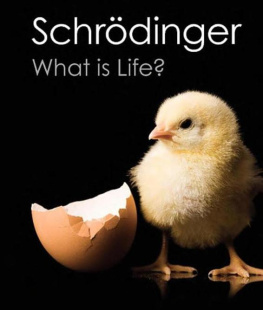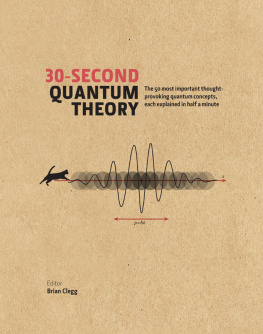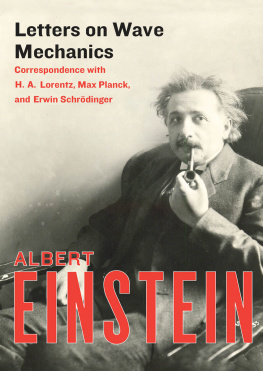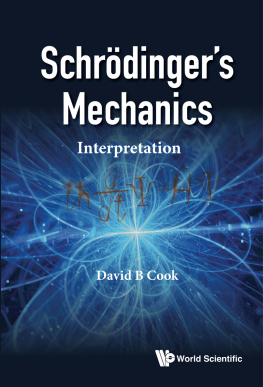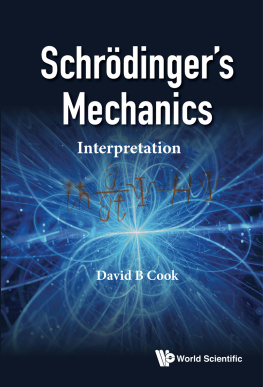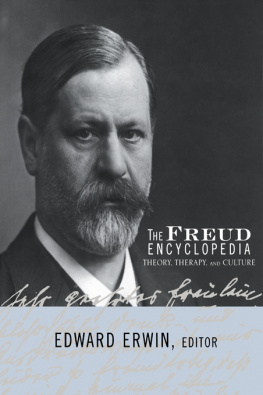What is Life? The Physical Aspect of the Living Cell
Based on lectures delivered under the auspices of the Dublin Institute for Advanced Studies at Trinity College, Dublin, in February 1943
To the
memory of
my parents
Preface
A scientist is supposed to have a complete and thorough knowledge, at first hand, of some subjects and, therefore, is usually expected not to write on any topic of which he is not a master. This is regarded as a matter of noblesse oblige. For the present purpose I beg to renounce the noblesse, if any, and to be freed of the ensuing obligation. My excuse is as follows:
We have inherited from our forefathers the keen longing for unified, all-embracing knowledge. The very name given to the highest institutions of learning reminds us, that from antiquity and throughout many centuries the universal aspect has been the only one to be given full credit. But the spread, both in width and depth, of the multifarious branches of knowledge during the last hundred odd years has confronted us with a queer dilemma. We feel clearly that we are only now beginning to acquire reliable material for welding together the sum total of all that is known into a whole; but, on the other hand, it has become next to impossible for a single mind fully to command more than a small specialized portion of it.
I can see no other escape from this dilemma (lest our true aim be lost for ever) than that some of us should venture to embark on a synthesis of facts and theories, albeit with second-hand and incomplete knowledge of some of them, and at the risk of making fools of ourselves.
So much for my apology.
The difficulties of language are not negligible. One's native speech is a closely fitting garment, and one never feels quite at ease when it is not immediately available and has to be replaced by another. My thanks are due to Dr Inkster (Trinity College, Dublin), to Dr Padraig Browne (St Patrick's College, Maynooth) and, last but not least, to Mr S. C. Roberts. They were put to great trouble to fit the new garment on me and to even greater trouble by my occasional reluctance to give up some 'original' fashion of my own. Should some of it have survived the mitigating tendency of my friends, it is to be put at my door, not at theirs.
The head-lines of the numerous sections were originally intended to be marginal summaries, and the text of every chapter should be read in continuo.
E.S.
DUBLIN
SEPTEMBER 1944
Homo liber nulla de re minus quam de morte cogitat; et ejus sapientia non mortis sed vitae meditatio est. SPINOZA'S Ethics, Pt iv, Prop. 67
(There is nothing over which a free man ponders less than death; his wisdom is, to meditate not on death but on life.)
1. The general Character and the Purpose of the Investigation
Cogito ergo sum.
DESCARTES
This little book arose from a course of public lectures, delivered by a theoretical physicist to an audience of about four hundred which did not substantially dwindle, though warned at the outset that the subject-matter was a difficult one and that the lectures could not be termed popular, even though the physicist's most dreaded weapon, mathematical deduction, would hardly be utilized. The reason for this was not that the subject was simple enough to be explained without mathematics, but rather that it was much too involved to be fully accessible to mathematics. Another feature which at least induced a semblance of popularity was the lecturer's intention to make clear the fundamental idea, which hovers between biology and physics, to both the physicist and the biologist.
For actually, in spite of the variety of topics involved, the whole enterprise is intended to convey one idea only one small comment on a large and important question. In order not to lose our way, it may be useful to outline the plan very briefly in advance.
The large and important and very much discussed question is:
How can the events in space and time which take place within the spatial boundary of a living organism be accounted for by physics and chemistry?
The preliminary answer which this little book will endeavour to expound and establish can be summarized as follows:
The obvious inability of present-day physics and chemistry to account for such events is no reason at all for doubting that they can be accounted for by those sciences.
Statistical Physics. The Fundamental Difference in Structure
That would be a very trivial remark if it were meant only to stimulate the hope of achieving in the future what has not been achieved in the past. But the meaning is very much more positive, viz. that the inability, up to the present moment, is amply accounted for.
Today, thanks to the ingenious work of biologists, mainly of geneticists, during the last thirty or forty years, enough is known about the actual material structure of organisms and about their functioning to state that, and to tell precisely why, present-day physics and chemistry could not possibly account for what happens in space and time within a living organism.
The arrangements of the atoms in the most vital parts of an organism and the interplay of these arrangements differ in a fundamental way from all those arrangements of atoms which physicists and chemists have hitherto made the object of their experimental and theoretical research. Yet the difference which I have just termed fundamental is of such a kind that it might easily appear slight to anyone except a physicist who is thoroughly imbued with the knowledge that the laws of physics and chemistry are statistical throughout. For it is in relation to the statistical point of view that the structure of the vital parts of living organisms differs so entirely from that of any piece of matter that we physicists and chemists have ever handled physically in our laboratories or mentally at our writing desks. It is well-nigh unthinkable that the laws and regularities thus discovered should happen to apply immediately to the behaviour of systems which do not exhibit the structure on which those laws and regularities are based.
The non-physicist cannot be expected even to grasp let alone to appreciate the relevance of the difference in 'statistical structure' stated in terms so abstract as I have just used. To give the statement life and colour, let me anticipate what will be explained in much more detail later, namely, that the most essential part of a living cell the chromosome fibre may suitably be called an aperiodic crystal. In physics we have dealt hitherto only with periodic crystals. To a humble physicist's mind, these are very interesting and complicated objects; they constitute one of the most fascinating and complex material structures by which inanimate nature puzzles his wits. Yet, compared with the aperiodic crystal, they are rather plain and dull. The difference in structure is of the same kind as that between an ordinary wallpaper in which the same pattern is repeated again and again in regular periodicity and a masterpiece of embroidery, say a Raphael tapestry, which shows no dull repetition, but an elaborate, coherent, meaningful design traced by the great master.
In calling the periodic crystal one of the most complex objects of his research, I had in mind the physicist proper. Organic chemistry, indeed, in investigating more and more complicated molecules, has come very much nearer to that 'aperiodic crystal' which, in my opinion, is the material carrier of life. And therefore it is small wonder that the organic chemist has already made large and important contributions to the problem of life, whereas the physicist has made next to none.
The Nave Physicist's Approach to the Subject

